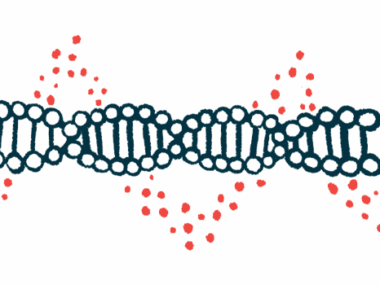New vEDS mutations fail to be detected by standard genetic testing
Mutations in COL3A1 gene are chief cause of the disease
Written by |

Two new mutations in the COL3A1 gene, the underlying chief cause of vascular Ehlers-Danlos syndrome (vEDS), were discovered after being missed by standard genetic testing, a study reported.
“Our study highlights the necessity of a comprehensive approach to the genetic diagnosis of vEDS,” wrote the researchers in “Identification of two novel COL3A1 variants in patients with vascular Ehlers-Danlos syndrome” in Medical Genetics & Genomic Medicine.
The COL3A1 gene carries instructions for type III collagen, a protein that strengthens and supports the skin, lungs, and walls of the intestines and blood vessels. vEDS is marked by thin, transparent skin that’s easily bruised and fragile arteries, muscles, and internal organs. It’s the most severe type of EDS due to the high risk of bleeding and is associated with shorter life expectancy.
The disease is often suspected when a person has a major unexplained problem with their blood vessels. Standard genetic testing to identify COL3A1 mutations is performed to confirm a diagnosis.
Researchers in South Korea described the discovery of two new vEDS-causing mutations that weren’t detected by standard genetic tests. “Identifying pathogenic variants in COL3A1 is important for timely management and diagnosis,” they wrote.
Mutations not detected by standard gene test in vEDS
The first discovery was made after a 21-year-old woman with a history of bruising easily was admitted to the hospital due to a traumatic carotid-cavernous fistula (CCF). This is caused by an abnormal connection between the carotid artery, which supplies blood to the head, and the cavernous sinus, a network of veins at the back of the eye. Red eyes are a sign of CCF.
While the CCF was successfully treated, a physical exam revealed thin skin with visible blood vessels, large patches of blood pooling under the skin, and multiple bruises. Imaging studies detected multiple aneurysms — a bulge in a weakened area of a blood vessel — in the arteries that supply blood to the abdominal organs.
Although all signs suggested vEDS, no genetic variants were identified by standard genetic analysis. Her family history included the death of her father in his 50s due to heart failure and her paternal grandfather in his 40s.
During follow-up, the woman underwent CT scans every two years, but no changes were seen in the aneurysms’ status. She died at age 39 due to a ruptured aneurysm in a kidney artery, however.
Although standard genetic analysis found no specific COL3A1 mutations, data was missing from exon 27, one of several segments along the DNA chain that carries instructions to make type III collagen. The exon 27 deletion was confirmed with secondary testing. The mutation wasn’t found in a population database and was classified as likely pathogenic, or disease-causing.
In a second case, a 42-year-old man with a blood vessel problem was found during a medical checkup. A physical exam showed so-called cigarette paper scars on both knees and shins. These are usually caused by wounds that split open and leave scars that widen over time. Narrow transparent blood vessels were observed over his trunk.
Imaging studies showed multiple aneurysms within the abdomen. He had numbness in three fingers, which was explained by blood vessel blockage as seen in a CT scan.
While vEDS was suspected, standard genetic testing found no COL3A1 mutations. The man’s father died of heart failure in his 50s, his grandfather in his 40s, but his three brothers had no signs of vEDS. The patient was on regular follow-up treatment without surgery at the time this study was concluded.
Whole-genome sequencing, which reveals the complete DNA makeup of a patient, found two previously undescribed mutations in his COL3A1 gene.
One mutation was in intron 16, one of several segments along the DNA chain in between exons. Introns are removed, or spliced out, to create the final protein coding chain made up of only exons.
An analysis suggested this mutation caused a splicing defect, leading to a shortened messenger RNA — the intermediate molecule in the production of type III collagen from the COL3A1 gene. A deletion in exon 16 was also found, which was classified as likely pathogenic.
“We identified two novel likely pathogenic variants in COL3A1 in two patients with clinical symptoms consistent with vEDS,” the researchers said.






